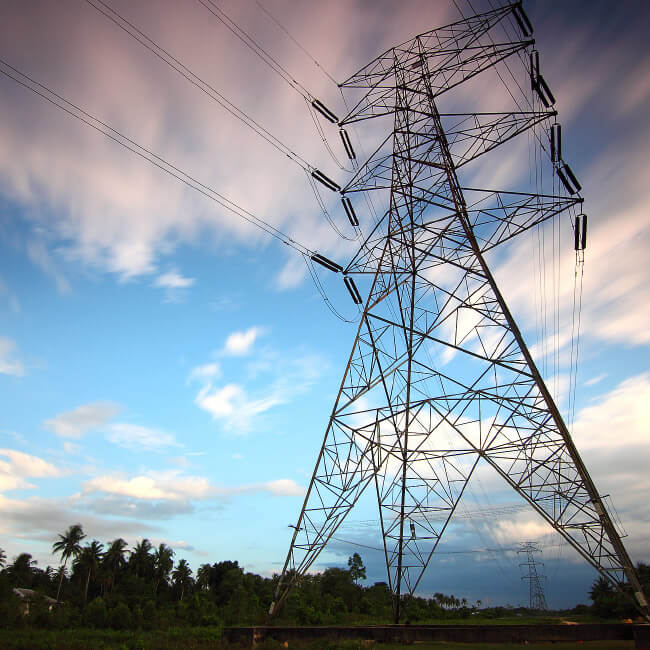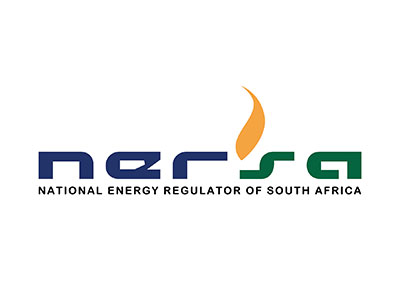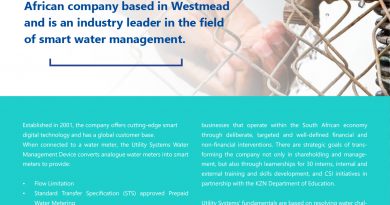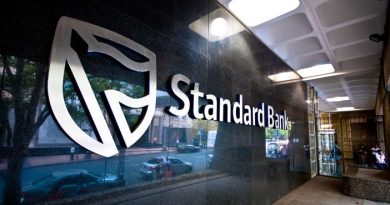NATIONAL ENERGY REGULATOR OF SOUTH AFRICA
REASONS FOR DECISION
1. LEGAL MANDATE
- Section 4(c) of the National Energy Regulator Act, 2004 (Act No. 40 of 2004) (‘the NERA’) empowers the National Energy Regulator of South Africa (NERSA) with the responsibility to undertake the functions detailed in section 4 of the Electricity Regulation Act, 2006 (Act No. 4 of 2006) (‘the ERA’).
- The ERA sets out the powers and functions of NERSA. Specifically, of relevance to this application is section 4(a)(ii), wherein NERSA is empowered and required to regulate prices and tariffs.
- In performing its mandated functions, NERSA is required to ensure that the following objects are achieved:
- the efficient, effective, sustainable and orderly development and operation of electricity supply infrastructure in South Africa;
- the interests and needs of present and future electricity customers and end users are safeguarded and met, having regard to the governance, efficiency, effectiveness and long-term sustainability of the electricity supply industry within the broader context of economic energy regulation in the Republic;
- investment in the electricity supply industry is facilitated;
- universal access to electricity is facilitated;
- the use of diverse energy sources and energy efficiency is promoted;
- competitiveness and customer and end user choice are promoted; and
- a fair balance between the interests of customers and end users, licensees, investors in the electricity supply industry and the public is facilitated.
2. EXECUTIVE SUMMARY
- On an annual basis, NERSA determines an appropriate tariff guideline increase, which is then communicated to municipal distributors as a guide to determine their annual electricity tariffs.
- This guideline does not preclude a distributor from the legal obligation to apply to the Energy Regulator for tariff increases before implementation.
- The guideline increase assists the municipalities in the preparation of their budgets.
- NERSA also reviews the tariff benchmarks and recommends the new benchmarks that must be used in the evaluation of the municipal tariff applications. The revised benchmarks are used in the evaluation of the municipal tariff applications.
- The Energy Regulator has made decisions on the following matters:
- the guideline increase;
- tariff benchmarks;
- financial indicators;
- above-guideline tariff applications; and
- the alternative regulation approaches.
3. BACKGROUND AND INTRODUCTION
- The Electricity Pricing Policy document seeks to obtain a balance between several competing objectives, which include affordable electricity for the low-income consumers and cost-reflective tariffs for all the other consumers. As a result, electricity prices should reflect efficient market signals, and accurate cost of supply and associated price levels that would ensure the financial viability of the electricity sector in its entirety.
- Furthermore, the economic theory suggests that a perfectly competitive market would produce efficient prices. The Electricity Supply Industry (ESI) in South Africa is currently not structured to deliver perfect competition, but this does not diminish the importance of efficient electricity prices in any way.
- In the absence of competition, regulators may select from a range of methodologies to regulate the industry. All these options have various advantages and disadvantages. Regardless of the method of regulation or price formation, it is essential that an efficient and prudent licensee should be able to generate sufficient revenues that will allow it to operate as a viable concern, now and in the future. Moreover, it is important that the regulated business is able to attract reasonably priced finance in order to maintain, refurbish and grow its infrastructure and provide services at a reasonable cost.
- As a result, tariffs must be set at a level that will not only ensure that the utility generates sufficient revenues to cover the full costs (including a reasonable margin or return), but will also allow the utility to obtain reasonably priced funding.
- Historically, NERSA has taken the benchmarking approach, which sought to ensure that tariffs do not vary vastly among the various electricity distributors, among other objectives. This approach does not explicitly show the relationship between the licensee’s cost structures and its tariffs.
- NERSA has previously attempted to address this issue by benchmarking the municipal tariffs to Eskom’s tariffs. However, this approach raised numerous challenges since Eskom’s tariffs are based on an embedded cost to supply approach, which seeks to set rates to recover approved revenues. As a result, these do not result in industry/municipality-related rates, but rather Eskom-specific cost-related rates.
- This meant that an approach is needed that would somehow translate municipalities’ cost requirements to tariffs. NERSA, in addressing the above predicament, has considered various options for setting rates for municipalities, especially in light of trying to ensure that these rates are set in line with the Municipal Finance Management Act, 2003 (Act No. 56 of 2003) (‘MFMA’) deadlines. The proposed alternative approaches and the recommended approach are detailed below.
4. NERSA’s DECISION-MAKING PROCESS
- NERSA considered four options as a means of setting municipal tariffs for the 2022/23 financial year. These options include regulating using the Activity Based Costing (ABC) approach; benchmarking against Eskom tariffs; regulating using Cost of Supply (COS) studies exclusively and regulating using the guideline increase and benchmarks.
- NERSA’s intention was to regulate using the ABC approach for the 2022/23 financial year, however due to the court ruling on 3 December 2021, this approach could not be pursued.
- Therefore, various drawbacks identified from other alternatives in terms of practicality in implementing and due to the short amount of time available, NERSA decided on the regulating using the guideline increase and benchmarks approach. However, it should be noted that timelines for implementation of the ABC approach have been detailed below.
- NERSA published the guideline and benchmarks consultation paper on its website on 30 March 2022 and published an advert in national newspapers (Business Day,
Sunday Times, Beeld and Independent Newspapers) and the Government Gazette on March 2022 to solicit comments and input from all affected persons and stakeholders. The closing date for comments was 22 April 2022. NERSA received five comments from stakeholders. Although initially the intention was to follow a ‘notice and comment’ process for public participation, requests from stakeholders necessitated the convening of a public hearing. This public hearing took place on 13 May 2022.
- The Energy Regulator made its determination on the Municipal Tariff Guideline and the revision of the Municipal Tariff Benchmarks on 25 May 2022.

5. THE ALTERNATIVE REGULATION APPROACHES
- Approach 1
- Approach 1 entails approving prices for Generation (Gx), Transmission (Tx) and Distribution (Dx) as opposed to the historic approach of approving Eskom revenues, Eskom’s Retail Tariff Structural Adjustment (ERTSA) and then only the municipal guideline increase and benchmarks. This approach seeks to use Activity Based Costing (ABC) and marginal costing to set the price(s) for different levels of the electricity industry supply chain. ABC will disaggregate electricity costs into Gx, Tx, Dx, system operations, trading, market operations and other ancillary costs. Most importantly, this approach will do away with the ERTSA and Municipal Guidelines processes.
- Using this approach implies that municipal and other distribution tariffs would be set using ABC and marginal costing. This approach would allow NERSA to set each municipality’s tariff based on its cost of service. However, based on the court’s directive, this approach cannot be used in the current tariff cycle. Furthermore, this approach is data intensive and will require the collection of specific information by municipalities; as such, it will require a phased-in approach.
- NERSA is in the process of developing data templates that will be used to collate the data that is necessary for the use of this approach. This forms part of the process to develop a fully-fledged methodology that licensees can use to apply for their tariffs.
- Table 23 below demonstrates the timeframes within which the pricing principles will be developed and incorporated into the existing multiyear price determination.
Table 1: ABC approach implementation timelines
| Task Name | Duration | Start | Finish |
| Publication of consultation paper | 43 days | Wed 22/06/01 | Fri 22/07/29 |
| Draft Methodology and enabling documents | 25 days | Mon 22/07/18 | Fri 22/08/19 |
| Final Methodology presented to ELS | 25 days | Tue 22/08/02 | Mon 22/09/05 |
| Final Methodology presented to ER | 18 days | Tue 22/09/06 | Thu 22/09/29 |
| Final methodology successfully Published | 1,5 days | Fri 22/09/30 | Mon 22/10/03 |
- It is envisaged that the entire process will be concluded by 3 October 2022 to allow licensees to submit their applications for the 2024/25 tariff reviews.
- As stated above, NERSA could not implement the ABC approach for the FY2022/23 due to the court judgement. This approach is therefore not ready for use as it is currently under development.

5.2. Approach 2
- Approach 2 entails benchmarking municipal tariffs against Eskom tariffs, which would mean that municipalities would have to charge the same tariffs as Eskom for similar customers. However, this approach raised numerous challenges since Eskom’s tariffs are based on an ‘embedded cost to supply’ approach, which seeks to set rates to recover approved revenues. As a result, these do not result in industry/municipality-related rates, but rather Eskom-specific cost- related rates. Furthermore, Eskom and municipal costs differ significantly, therefore such an approach would mean that municipalities/distributors would not be able to cover their cost to supply.
- This approach would be effective if Eskom were to be completely unbundled, where Dx is completely independent from the Eskom Group, since its tariff increase encompasses the three main divisions of the Eskom Group. The unbundling of Eskom would (i) eliminate cross-subsidisation among its functions; and (ii) ensure that Dx is charged the same price as third-party distributors, as such providing a better benchmark.
5.3. Approach 3
- Approach 3 entails approving municipal tariffs based on cost of supply (COS) studies. This approach requires municipalities to set their tariffs based on COS studies in support of Policy Position 23 of the Electricity Pricing Policy (EPP), which states that Electricity distributors shall undertake COS studies at least every five years, but at least when significant licensee structure changes occur, such as changes in customer base, relationships between cost components and sales volumes. This must be done according to the approved NERSA framework to reflect changing costs and customer behaviour. Several challenges have been experienced with this approach.
- COS studies require the collection and analysis of data and the keeping of proper accounting and asset records. NERSA has identified that municipalities are not submitting compliant CoS studies. The key challenges with the studies submitted include the following:
- updating physical asset registers with asset replacement costs, useful lives and depreciated replacement costs;
- correcting sales and purchase metering data, as general ledger accounts must be corrected to reflect correct data, e.g. some journals capture data in Rand not sales volumes, and maximum demand charges are captured as consumption units (kWh), as well as updating tariff codes and definitions; linking tariff codes to approved tariff names/types;
- meter audits must ensure that meters that are not active are not included in the determination of customer service and billing costs;
- poor accounting and poor keeping of property records;
- lack of capacity;
- poor data gathering and verification processes;
- complete reliance on external service providers without much involvement from municipal management, leading to the process not being fully owned by the municipality;
- high municipal staff turnover and lack of proper handover policies and institutional memory;
- insufficient funding of the project; and
- evidence of poor advice from service providers has been noted.
- NERSA has made extensive efforts to assist licensees in complying. As a deterrent to non-compliance, NERSA is no longer approving the introduction of new tariffs/tariff restructuring or above guideline increases without a COS study.
A simplified COS tool has been developed by Sustainable Energy Africa (SEA) [a Non-Governmental Organisation (NGO) in the energy sector], in conjunction with the South African Local Government Association (SALGA) and NERSA and has been made available to all licensees on the NERSA website. This tool can be used to support proposals for the submission of new tariffs or restructured tariffs.
- This tool shows a link between the required revenue and the costs associated with supplying a category of consumers, the classification of costs between fixed and variable costs, as well as energy, demand-related and customer-related costs. It also shows the allocation of these costs to some allocation factors, largely the position on the network. It does not replace the fully-fledged COS study and supporting data required.
- The difference between the tool and a fully-fledged COS study is that the tool uses the current Distribution form (D-form) data to allocate Eskom purchase costs and the municipality’s current costs (the base is the audited financial statements). It does not use the Current Replacement Costs (CRC) depreciation as required by the COS framework. The tool also utilises generic consumption profiles to allocate time-of-use (TOU) purchase costs as opposed to the municipality’s own TOU profiles. However, the tool does give an indication of the costs of supplying customers based on D-form costs (financial statements). It is a good indication of the allocation of existing costs between different customer groups based on where they are located on the network. A risk identified with the tool is that licensees might assume that it is a replacement for a full COS study, which it is not. NERSA has put effort into communicating to licensees that this tool does not replace a COS study, but can be used as an interim tool to submit proposals for tariff structural changes, subject to approval by NERSA.
- Licensees have been requested to undertake COS studies and submit them to NERSA for consideration. Licensees that are unable to undertake COS studies were encouraged to use NERSA’s approved framework and the simplified COS tool provided as guidance when undertaking these studies, in the interim, so that they can be assessed by NERSA for prudence and efficiency. Such applications will be assessed using the Cost of Supply Framework1, which sets out the parameters within which the applications will be considered.
1 https://www.nersa.org.za/wp-content/uploads/bsk-pdf-manager/2020/09/Cost-of-Supply-Framework.pdf
- NERSA has noted a steady improvement in the quality of the data submitted to support COS studies. This has been largely due to NERSA’s efforts to assist licensees to submit compliant COS studies. It has also been due to the collaboration between NERSA and other stakeholders such as SALGA, the Department of Cooperative Governance and Traditional Affairs (CoGTA), National Treasury and the SEA. NERSA envisions that more studies will be approved before the end of the 2023 FY.
- NERSA has put effort into communicating to licensees that COS studies are not a solution to all their problems. They must still reduce energy loses to fall within NERSA’s allowable range. Debt collection efforts as well as their operations in terms of repairs and maintenance must also be improved. A COS study will not necessarily solve all these problems. Part of the solution that will ensure the successful implementation of the COS project includes:
- the development of data bases and improved verification processes by licensees;
- effort from licensees to study and understand the framework to avoid working towards incorrect output;
- NERSA providing training to licensees on the COS framework and lessons learnt from other submitted COS studies;
- involvement of municipal officials in the work done by consultants; and
- development of handover policies by licensees.
- This approach is currently being implemented in parallel with Approach 4 in the interim, with the intention that eventually, all licensees will progress towards this approach (in conjunction with approach 1), once all challenges have been addressed. It should be noted that COS studies remain a requirement regardless of the approach used.
- Although NERSA has approved two cost of supply studies, these tariffs have not yet been implemented. NERSA will undertake a process of tariff rationalisation/harmonisation based on the approved cost of supply, and the current tariffs based on benchmarks, before a decision is recommended. This will ensure that stakeholders are cushioned from the impact of spiking tariffs.

5.4. Approach 4
- Approach 4 entails approving municipal tariffs based on a percentage guideline increase and municipal tariff benchmarks. The municipal tariff guideline increase is developed based on Eskom’s approved bulk price increase of
electricity to municipalities and the increase in the municipalities’ cost structures. Hence, the approval of the municipal guideline increase is subsequent to the determination of the ERTSA.
- In light of challenges related to approach 1, 2 and 3, parallel implementation of approaches 3 and 4 is the most effective approach to implement in terms of simplicity in order to approve tariffs and address other municipal challenges in the short term. This approach is therefore recommended for implementation for the 2022/23 tariff cycle.
- Municipalities who intend to submit their COS-based tariff applications should do so by 30 September 2022 for implementation on 1 July 2023.
- All licensees are expected to submit the Regulatory Financial Reports. This will ensure that ring-fencing of the electricity costs is achieved.
- Furthermore, NERSA will develop revised benchmarks based on approved COS studies and collected costs in line with the ABC approach. These benchmarks will evolve as more studies are approved and cost information collected. As a result, the development of these benchmarks will be aligned to the industry costs.
- The financial and technical indicators in Table 2below will be used to assess the financial performance. The parameters are explained in the paragraphs that follow.
| Performance indicators | Benchmark | Acceptable range | ||
| Electricity Price Margin (%): | 60 | 58 | – | 62 |
| Bulk Purchase Cost / Total expenditure: (%) | 75 | 58 | – | 78 |
| Energy Losses: (%) | 10 | 5 | – | 12 |
| Revenue collection rate (%) | 95 | 95 | ||
| Repairs & Maintenance (% of revenue) | 6 | 6 | – | 15 |
| Net Surplus Margin (%): | 15 | 10 | – | 20 |
- Municipalities that operate within these benchmarks are expected to be able to run a sustainable and efficient electricity business.
- Electricity Price Margin: This is calculated using the following formula (Average Selling Price less Average Purchase Price / Average Selling Price X 100). This
will be used to assess the municipality’s electricity business performance purely from an electricity purchase and sale perspective. This will highlight any affordability issues municipalities could be experiencing in terms of the average bulk tariff they buy at from Eskom when compared to the average selling price to its customers. This should provide a good indication of a licensee’s tariff adequacy and the need to undertake a COS study.
- Bulk Purchase Cost/Total expenditure: This is calculated using the following formula (bulk purchase cost / total electricity department costs). This will be used to assess the municipality’s expenditure on bulk purchases relative to total expenditure.
- Energy losses percentage: This is calculated using the following formula (electricity kWh purchases less electricity kWh sales) / electricity purchases X 100. This will be compared against set targets and used to assess the efficiency of the municipality’s network and billing functions. This is meant to ensure that technical losses are managed efficiently. Non-technical losses are discouraged in their entirety.
- Revenue collection rate: This is calculated using the following formula (billed revenue less bad debts written off). This will be compared against the target of 95% and used to assess the efficiency of the municipality’s proportion of billed revenue that is collected. This relates to the municipality’s ability to collect billed revenues.
- Repairs and maintenance percentage: This is calculated using the following formula (repairs and maintenance expenditure / electricity revenue billed). This will be compared against set targets and used to assess the municipality’s investment in its network infrastructure and maintenance. Municipalities are required to submit a plant condition report, including their respective maintenance plan reports, detailing expenditure in this aspect. This should allow the regulator to assess the state of the infrastructure and the current level of spending on maintenance compared to the levels required.
- Net surplus margin: This is calculated using the following formula (net surplus / electricity revenue X 100). This will be used to assess the municipality’s electricity business performance after taking into account all of the other costs of the licensee.
- These performance targets will ensure that municipalities are encouraged to improve their revenue collection and reduce their energy losses, as well as spend sufficiently on the repair and maintenance of their networks to ensure the delivery of a sustainable, quality service. This will also ensure that a municipality earns a sufficient net surplus margin after all electricity costs have been taken into account.




